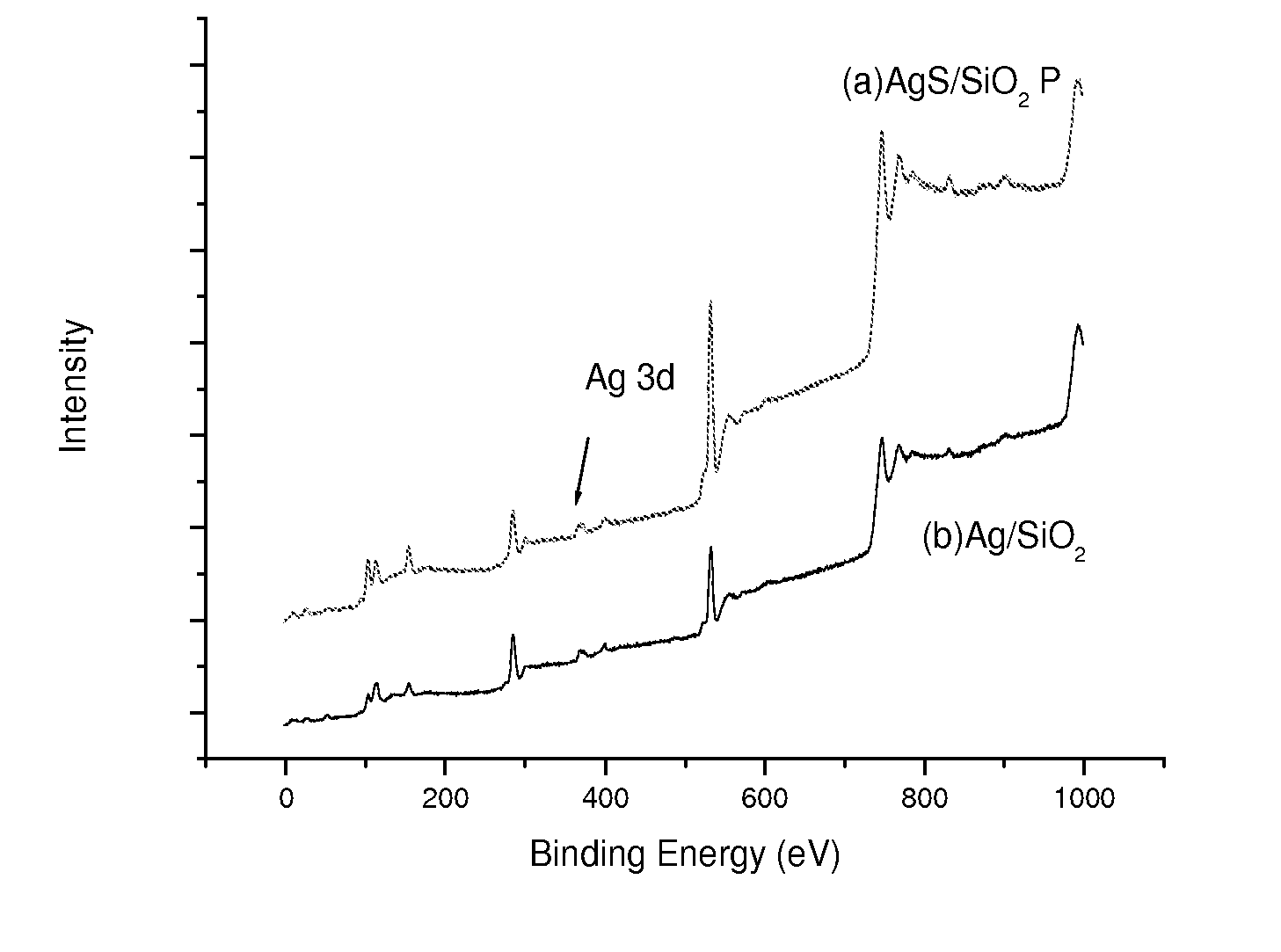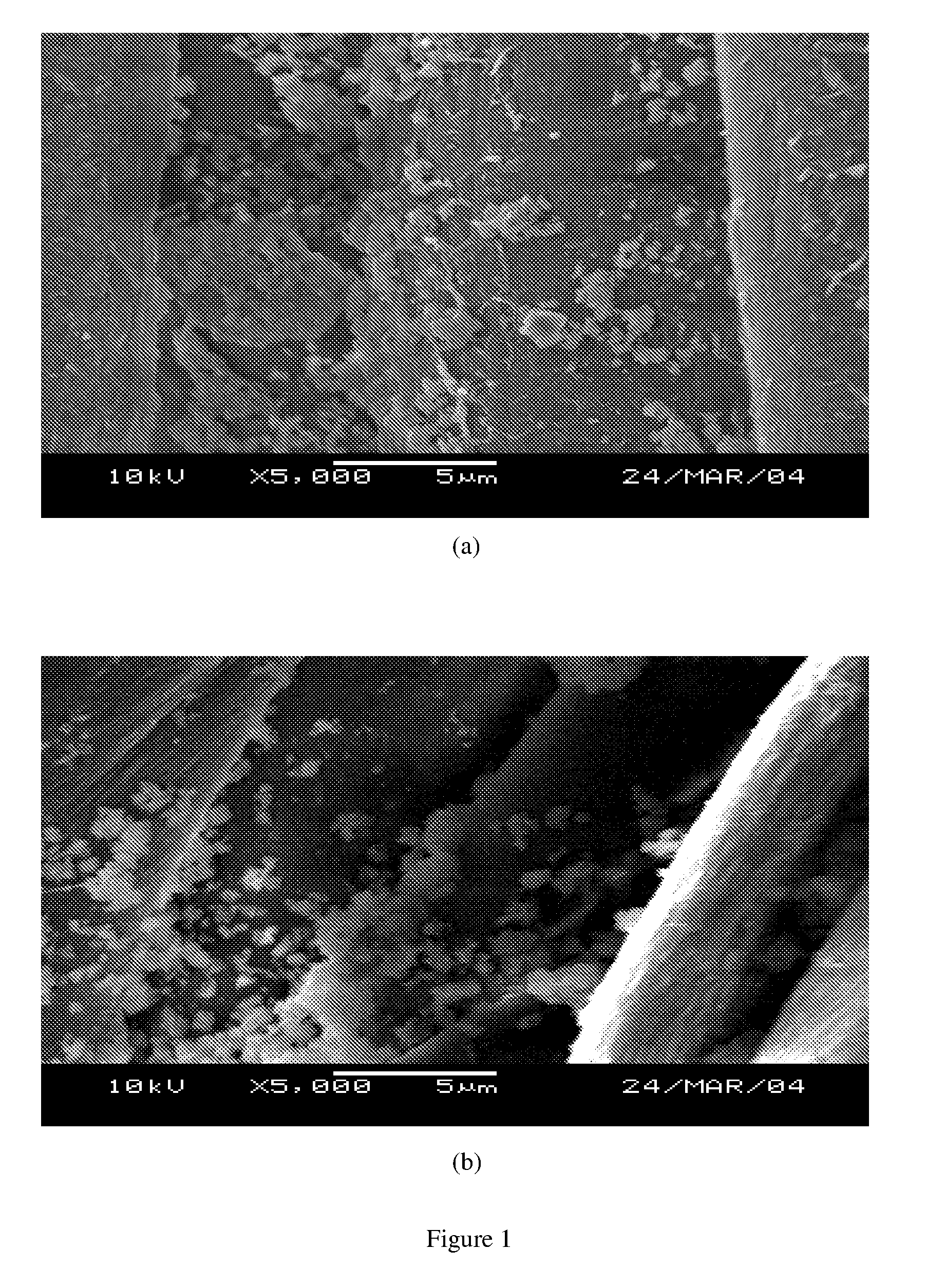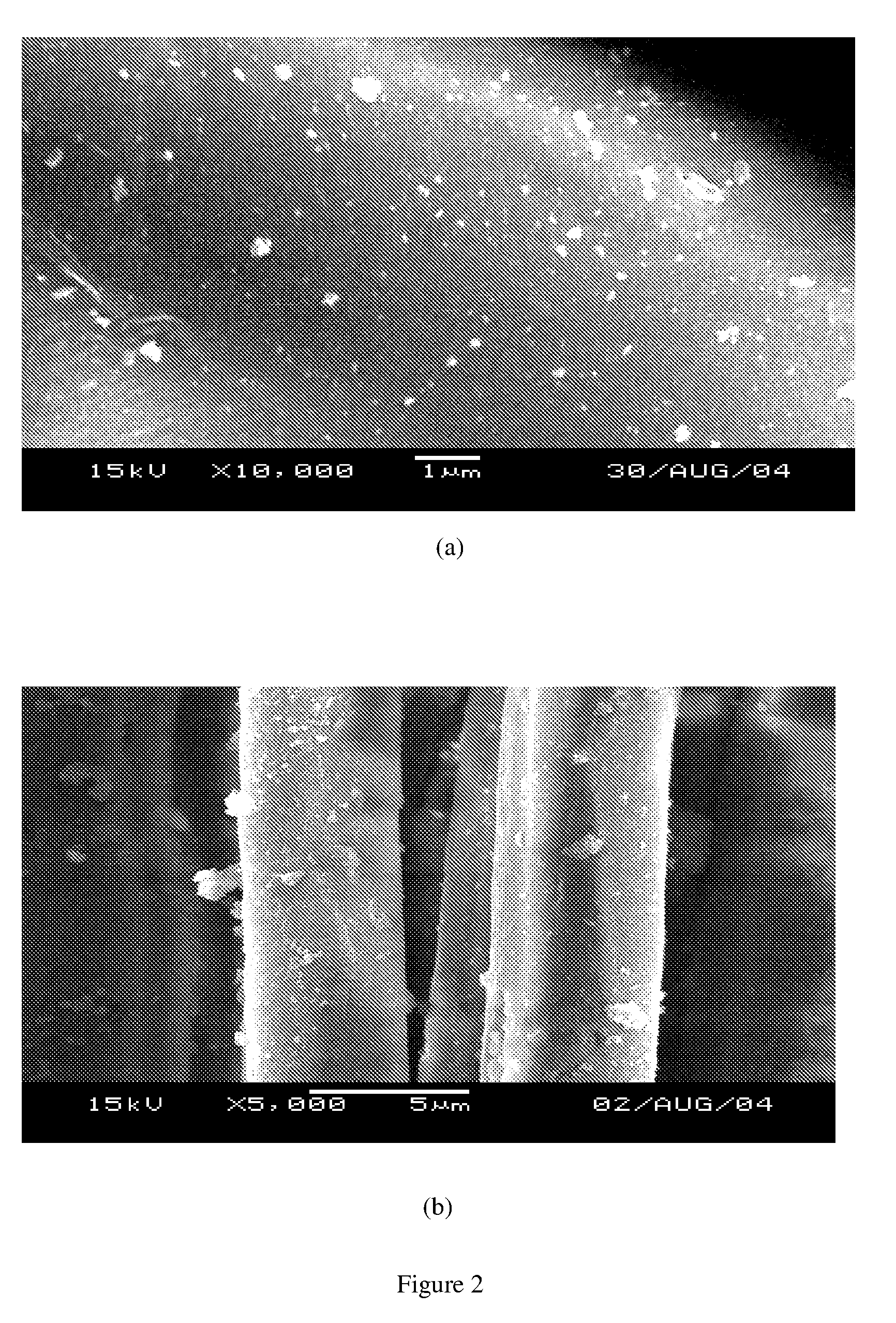Radiation Method for Fabrication of Nano-sized Compound Antibacterial Fabric Textile
a technology of fabric textile and nano-metal, which is applied in the field of innovativeness, can solve problems such as difficulty in combining with fibers, and achieve the effect of excellent antibacterial performan
- Summary
- Abstract
- Description
- Claims
- Application Information
AI Technical Summary
Benefits of technology
Problems solved by technology
Method used
Image
Examples
example 1
[0027]Take two different fabric materials in the same size (≧20×20 cm2). Immerse the Nylon or PET fabric material in a suspension solution of over 2.0 wt % Ag / SiO2 bactericidal powers for over two hours. Use press to remove excessive liquid. Then we use radiation less than 100 kGy to combine bactericidal powders and fabric material. Clean the fabric material to obtain the antibacterial product. FIG. 1(a) and FIG. 1(b) are the SEM pictures for bactericidal nano-powders on Nylon or PET after radiation exposure. It is observed that fiber surface has many bactericidal nano-powders after drying, possibly either through van der Waals forces or interaction with fibers (like covalent bond).
[0028]Cleaning is usually thought to remove the bactericidal powders that are on fiber surface through van der Waals forces. Silver containing fibers after agitation, with fiber surface subject to collisions and shaking, for a long time shall have grafting between surface remaining bactericidal nano-powde...
example 2
[0030]The irradiation method uses radiation to directly reduce silver particles on fiber surface. First, cut Nylon or PET fabric material (≧20×20 cm ) to immerse in silver nitrate solution for over two hours. Squeeze out excessive liquid by pressing. Then proceed with radiation in less than 80 kGy. FIG. 5 and FIG. 6 are SEM pictures for Nylon or PET immersed in silver nitrate and exposed to radiation. FIG. 5(a) is the SEM picture for Nylon fabric before cleaning, which indicates many tiny particles on surface. Although there is a small amount of aggregates, generally the particle distribution is uniform. It is thought that after radiation the fiber surface should have reduced silver particles and deposits of silver nitrate. Further silver particles include surface silver particles attracted by van der Waals forces and bonded or chelated particles. The silver particles after cleaning should be those on the surface through chemical bonding or chelating. FIG. 5(b) is the SEM picture af...
example 3
[0033]Besides the above post-irradiation and direct-irradiation methods, the process method also studies the variation of silver content for Nylon or PET fabric under pre-irradiation. The process for pre-irradiation is described as follows: irradiate Nylon or PET fabric with y-ray less than 60 kGy and immerse it in silver nitrate solution for over 20 minutes; proceed with pressing, drying and cleaning to produce nano antibacterial textile.
[0034]Table 3 shows the amount of silver content for fabric after pre-irradiation. From the table, it is known that the pre-irradiated fabric after cleaning has low silver content, less than 0.1 wt %. There are two reasons: first, the free radicals or peroxides produced on Nylon or PET surface exist for a very short of time and fail to reduce the silver ions in silver nitrate solution; second, the reduced silver particles need hydrated electrons, but the pre-irradiation fails to provide sufficient hydrated electrons to effectively reduce the silver...
PUM
| Property | Measurement | Unit |
|---|---|---|
| Time | aaaaa | aaaaa |
| Linear density | aaaaa | aaaaa |
| Fraction | aaaaa | aaaaa |
Abstract
Description
Claims
Application Information
 Login to View More
Login to View More - R&D
- Intellectual Property
- Life Sciences
- Materials
- Tech Scout
- Unparalleled Data Quality
- Higher Quality Content
- 60% Fewer Hallucinations
Browse by: Latest US Patents, China's latest patents, Technical Efficacy Thesaurus, Application Domain, Technology Topic, Popular Technical Reports.
© 2025 PatSnap. All rights reserved.Legal|Privacy policy|Modern Slavery Act Transparency Statement|Sitemap|About US| Contact US: help@patsnap.com



